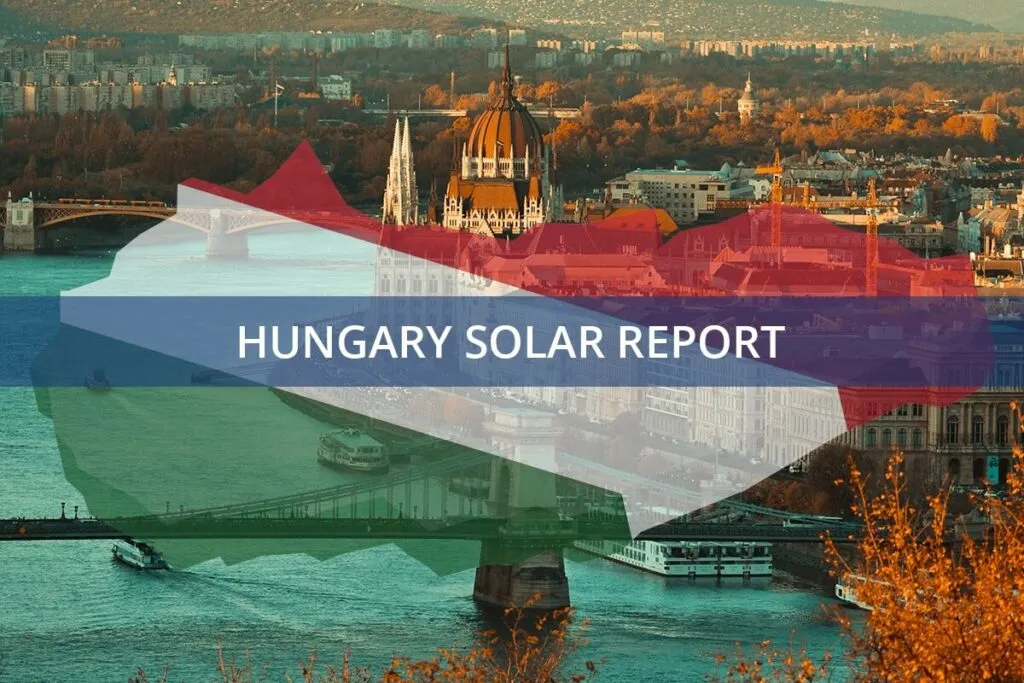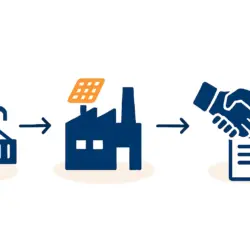Hungary is not just participating in Europe’s renewable energy transition; it’s leading the charge. In a remarkable display of progress, the nation has become a global leader in solar energy, with solar power accounting for nearly 30% of its electricity generation in the first half of 2025. This figure is more than triple the global average. This incredible growth is part of a broader European trend where solar and wind energy are rapidly displacing fossil fuels, marking the fastest shift in the continent’s electricity generation in over two decades.
Hungary Solar Energy Leader: A Success Story
Hungary’s ascent as a solar powerhouse is a story of ambition and rapid execution. According to the latest data from the energy think tank Ember, [Hungary’s solar energy share reached an impressive 30% by 2025], a significant leap that places it at the forefront of the global green transition. This achievement is staggering when compared to its position just four years ago, when its solar share was only 11.3%.
This exponential growth is backed by a massive expansion in capacity. Hungary’s installed solar capacity surpassed 9 GW in September 2025 and is on track to add another 1 GW for the fourth consecutive year. Looking ahead, the government has nearly doubled its 2030 target to an ambitious 12,000 MW (12 GW). This consistent, year-over-year [impressive Hungary solar energy boost] demonstrates a firm commitment to a sustainable energy future. Alongside Hungary, the Netherlands is also making significant strides, with solar energy expected to contribute 39 percent of its electricity by 2025.
Europe’s Renewable Energy Transformation with Hungary solar energy leader
The report from Ember highlights a significant transformation in Europe’s energy mix, with a [stunning milestone achieved in 2025 for EU solar energy]. By 2025, solar and wind energy are projected to supply 26 percent of the continent’s electricity, a substantial increase from the 16 percent share these renewable sources held in 2022.
This shift is driven by a combination of supportive government policies, key technological advances in the [solar panel manufacturing process], and growing public demand for sustainable energy. For homeowners and tenants in Germany, this continental trend is highly relevant. A greener, more integrated European grid can lead to greater energy security and more stable long-term pricing. Furthermore, Hungary’s success provides a powerful example of how decisive national strategy can accelerate the renewable transition, a lesson that can inform citizen advocacy and policy discussions within Germany.
Across Europe, nations are embracing solar and wind power to reduce reliance on fossil fuels and lower carbon emissions. This transition is essential for meeting climate goals and ensuring a sustainable energy future for all.
The Role of Solar and Wind in Europe’s Energy Future, Led by Hungary solar energy leader
Solar and wind energy are playing an increasingly critical role in Europe’s power grid. With these sources set to provide over a quarter of the continent’s electricity by 2025, their growth is fundamental to reducing Europe’s carbon footprint.
In this context, [Hungary solar power leads Europe] not just in statistics but as a practical model for rapid adoption. The country’s solar boom reflects a successful synergy of national and regional efforts to pivot to cleaner power. This success is a testament to the effectiveness of strategic policies and sustained investments in clean technology, from understanding the [basics of solar panel manufacturing] to deploying large-scale solar farms. As solar and wind power continue to expand, Europe is well on its way to significantly reducing its dependence on fossil fuels.
Challenges and Opportunities Ahead for Hungary solar energy leader
While Europe’s progress is impressive, significant challenges remain. Integrating large, intermittent sources like solar and wind requires substantial grid infrastructure upgrades and smart management solutions. Ensuring a stable energy supply when the sun isn’t shining or the wind isn’t blowing necessitates a massive build-out of energy storage solutions, such as batteries.
Despite these hurdles, the opportunities are immense. Europe’s commitment is spurring innovation across the entire value chain, from sourcing [solar panel raw materials] to developing next-generation [solar panel manufacturing machines]. For entrepreneurs and investors, understanding the [solar panel manufacturing plant cost breakdown] can unlock new business ventures in the clean energy sector. This transition is not only greening the grid but also creating thousands of skilled jobs.
As Europe continues to navigate the global energy transition, the lessons learned from pioneers like Hungary will be invaluable. The continent’s experience can serve as a blueprint for other regions aiming to build a sustainable and carbon-neutral energy future.
To learn more about how solar panels are made and the technology driving this green revolution, check out our [free e-course].



